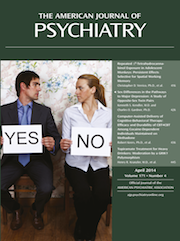This book attempts to bring a psycho-biographical perspective to the interaction of two individuals, Daniel Jaffe, an American neuropsychiatrist who served in the United States Army during World War II, and Okawa Shumei, a Japanese intellectual who had developed a popular philosophical basis for his country’s energetically waging that war in Asia. They interacted briefly at the time of the war crimes trials in Japan. Okawa had exhibited bizarre, disruptive behavior early in that group trial in which he was a defendant, and the psychiatrist, at the request of the chief judge, did a neuropsychiatric assessment on the basis of which he concluded that Okawa suffered from neurosyphilis and required treatment to stem the progress of the disease. The defendant was removed from the trial and spent some time in mental hospitals, eventually recovering sufficiently to return to the community and continue his intellectual pursuits and his occasional odd behavior.
In the course of his research, the author found some individuals who believe that Okawa deliberately comported himself as he did at the trial to call attention to the basic unfairness of the proceedings. They suggested that he was excluded from the trial because his testimony would have undermined the prosecution. There is some evidence to support the latter notion. The author’s emotional ties to the psychiatrist, his own grandfather, led him to wonder whether Jaffe’s relationship with a relative who suffered from a severe and persistent mental disorder, coupled with his self-diagnosed depersonalization during wartime service, may have contributed to his recommending treatment over continued prosecution. Do the facts he presents support either hypothesis? It seems not. Neurosyphilis was well understood at the time, and the description of Okawa’s presentation and the course of the illness conform to what we know about this disorder. The issue of an insanity defense did not arise at the time or ever. Jaffe did not communicate a judgment as to the legal issues or disposition. He made a diagnosis, and he called attention to available treatment that might in due course optimize Okawa’s capacity to participate intelligently in a trial. The judge used this information, independently corroborated by another psychiatrist, to order treatment, but he continued the legal case. Only later were the charges dismissed on overarching political grounds.
Why should a psychiatrist read this book? Young colleagues will learn about the constructive work psychiatrists did before the first DSM or the introduction of chlorpromazine, both in 1952. Military psychiatrists will see how an earlier generation solved the perennial problems of long deployments and of dual agency. Many more colleagues will find the narratives of the two seemingly different protagonists illuminating. That experience may be enhanced by reading first about Okawa and then about Jaffe, or vice versa, rather than alternating between the two lives, as the author does in an unnecessary effort to keep the chronologies parallel. Those who knew Jaffe late in his career as a dour and contentious participant in psychoanalytic politics may comprehend the inner forces that drove his actions. Okawa’s story is a striking reminder that a patient is far more than a container of a biomedical process, though that process may be the primary focus of our attention. His personality and actions are best appreciated in the context of his life history and culture. Saint Elizabeth’s Hospital, where Jaffe trained, was the locus not only of Walter Freeman and lobotomy but also of William Alanson White’s effective psychotherapy of neurosyphilis patients. One wonders what Okawa and Jaffe might have done together had their contact been longer and unconstrained by the context of their encounter.

